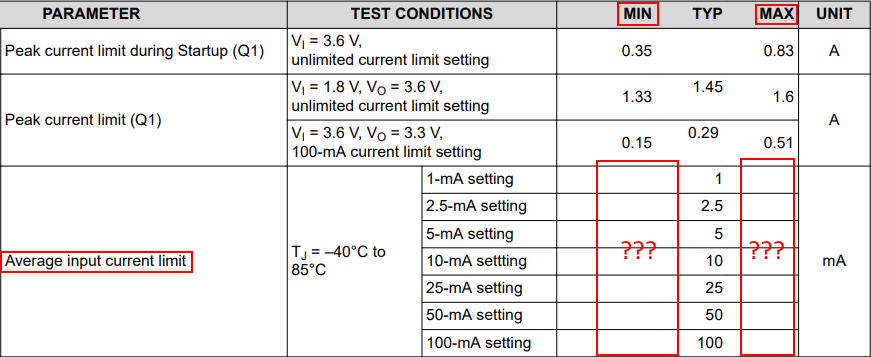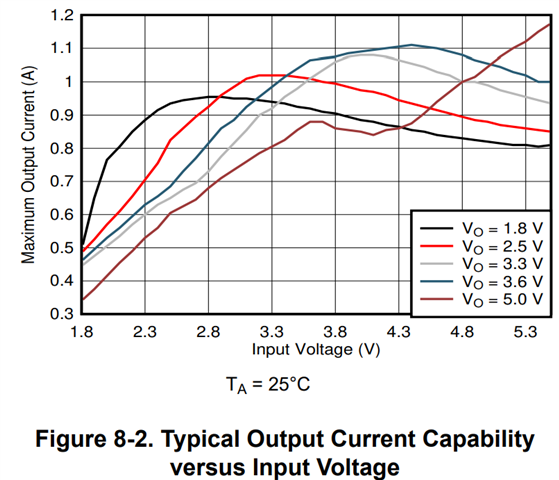Other Parts Discussed in Thread: TPS61299
Tool/software:
The datasheet for the TPS63900 lists typical values for the average input current limit for each setting. However, no minimums or maximums are listed.

Tool/software:
The datasheet for the TPS63900 lists typical values for the average input current limit for each setting. However, no minimums or maximums are listed.

Hi Karl,
Sorry for this device, I can't find an appropriate estimation for the min/max value of the input current limit.
You may refer the fig 8-2 for max Iout.

Can a boost converter work in your application? If yes then the TPS61299 may be a good choice, of which the input current limit has the min and max values.
Regards
Lei
Hi Karl,
If so, is it possible you select a current limit that is one step bigger than the one you actually need?
For example, in your application, if the min current limit to support the max Iout is 10mA, then you set the current limit at 25mA.
Regards
Lei
Great information, this is really helpful!
Is it possible that the current limit values are dependent on the exact implementation? Input/output capacitance, inductor specs, etc? Is it known exactly what passive components were used when measuring to obtain the 3 sigma values?
The reason I ask is because we are getting about 2.8mA on average with these. It may be that our measurement setup is not very accurate.
Also, we are using this to charge a supercapacitor (several 10s of Farads), so the output capacitance of the TPS63900 is effectively very high. Could that also be causing this deviation we see?
Hi Karl,
As the information I can find, the major factor that impacts the average input current limit is the Vin and Vout. The effective output capacitance won't cause the deviation.
A higher average input current limit, such as 2.8mA is possible.
Regards
Lei